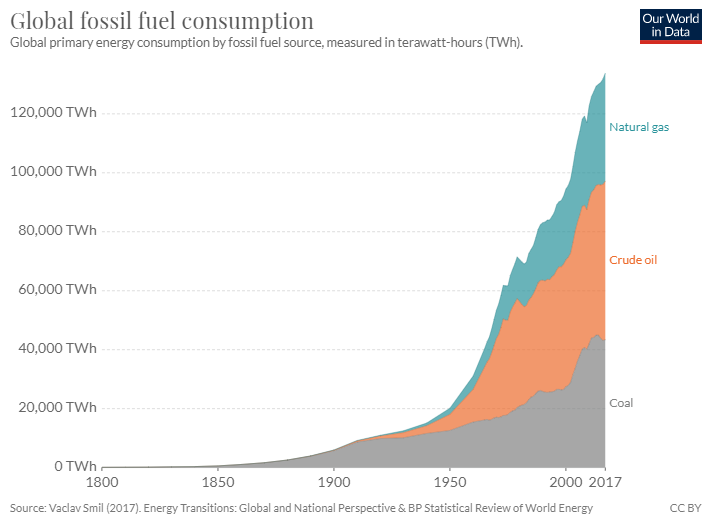Anthropogenic Impacts: Human and Environment Interaction | Paper 1
Get Study Materials of General Studies for UPPSC ⇒ DOWNLOAD NOW
Anthropogenic Impacts: Human Beings are a beautiful creation by God. Science says that human beings have appeared through biological evolution. Whatever the reason for Human appearance on the Earth, humans have been interacting with their environment since people first walked the Earth. And obviously, they interacted with the environment for the first and foremost need of food.
Human and Environment Interaction
We will discuss some of the ways in which humans interact with their environment and how the environment influences us, both positively and negatively.
Before going for further details on Human and Environment Integration, we must know about the term “environment.”
Environment
Environment means our physical surroundings and the characteristics of the place in which we live. It also refers to the wider natural world of land, sea, and atmosphere. The environment is the sum total of living and non-living components surrounding an organism. Different organisms live in different types of surroundings, such as air, water, and soil. Different kinds of living organisms share these surroundings. The surroundings are the “environment” of an organism. The environment has two components- Physical or abiotic (non-living) components and
- living or biotic components.
Abiotic components of the environment are air, water, soil, energy radiation, etc.
Biotic components of the environment are microbes (such as bacteria, algae, and fungi), plants, animals, etc.
The environment consists of four segments, such as: (i) Biosphere (ii) Atmosphere (iii) Hydrosphere, and (iv) LithosphereBiosphere:
All the parts of the Earth are not suitable for the survival of organisms. Some parts are too hot or very cold to support life. The part of Earth on which organisms can survive and reproduce is called the biosphere.Atmosphere:
The atmosphere is the only place where free oxygen and water vapour exist. The atmosphere is a thin layer of air (a mixture of gases) around the Earth, which is a great source for all living organisms.Hydrosphere:
Water plays a vital role in the biosphere; without it, life is impossible. The hydrosphere is the part of Earth on which all types of water resources exists, viz., oceans, seas, rivers, lakes, glaciers, ice caps, groundwater, etc.
Lithosphere:
Soil is a part of the lithosphere which supports life. The lithosphere is the part of the Earth where all types of minerals, metals, organic matters, rocks, soils, etc. exist.
| An ecosystem includes all the living organisms (humans, plants, animals, micro-organisms) and their physical environment (soil, water, air, land) and the interactions between them. Ecology is the study of the relationships between living organisms, including humans, and their physical environment; it seeks to understand the vital connections between plants and animals and the world around them. Ecology also provides information about the benefits of ecosystems and how we can use Earth’s resources in ways that leave the environment healthy for future generations. |
The environment can be summarised collectively as:
| 1. Biosphere | Plants, Animals, and Bio organism |
| 2. Atmosphere | Air (oxygen, CO2, Nitrogen, Hydrogen etc.) |
| 3. Hydrosphere | Water including oceans, seas, rivers, lakes, glaciers, ice caps, groundwater, etc. |
| 4. Lithosphere | Soil, Minerals, Rocks |
Anthropogenic Impacts
Human and Environmental Interaction can be described as the connections between human beings and the entire ecological system.
Human and environment interaction is the way people depend, adapt and modify the environment. The interaction between human and environment can be categorised in three ways:
- Dependency on the environment for food, water, timber, natural gas, etc.
- Adaptability for the environment to fulfill their own needs.
- Modification of the environment positively or negatively like drilling holes, building dams etc.
Anthropogenic Activities and their impact on environment
Most of the dictionaries defined the term “Anthropogenic” as “created or caused by human activity or “resulting from the influence of human beings on nature”
The population of India has crossed the figure of 1.3 billion and the world population is estimated to have crossed the 7.5 billion mark. To meet the demand for food, housing and energy, environmental resources are being exploited at a fast pace.
Anthropogenic Activities (Human Activities)
Anthropogenic activities do not only mean that human activities to meet the demand for food, housing, clothing, and energy, it also includes all those development activities which directly or indirectly affect nature.
The anthropogenic activities are the followings:
- Agriculture
- Energy production
- Industrialisation
- Transportation
- Personal and Domestic Activities
- Wars
Anthropogenic Impacts on Environment
Overpopulation is a stage in which the demand for natural resources does not meet for the population. In other words, overpopulation is the condition in which the available natural resources are limited or not sufficient for the human population.
The effects of overpopulation are quite severe, with one of the most severe being the degradation of the environment.
The environment has the potential to restore most of its resources in a certain period of time. However, over-exploitation of resources and anthropogenic activities have altered it leading to many environmental problems, such as:
- Deforestation
- Pollution
- Global Warming
- Depletion of Ozone Layer
- Diminishing of Fossil Fuels
- Acid Rain
- Climate Change
Depletion of Fossil Fuels
Fossil fuel is a term used to describe a group of energy sources that were formed from ancient plants and organisms during the Carboniferous Period, approximately 360 to 286 million years ago, before the age of dinosaurs. Fossil fuels are also called non-renewable energy.
There are three types of fossil Fuels, namely; Coal, Oil and Natural Gases. The reserves of fossil fuels are limited.
Further reading: Natural and Energy Resources
Fossil fuels (coal, oil, gas) have, and continue to, play a dominant role in global energy systems. Fossil energy was a fundamental driver of the Industrial Revolution and the technological, social, economic and development progress which has followed. Energy has played a strongly positive role in global change.
However, fossil fuels also have negative impacts, being the dominant source of local air pollution and emitter of carbon dioxide (CO2) and other greenhouse gases.
Fossil Fuel Consumption

Fossile Fuels Consumption
All deposits of fossil fuels are limited either physically or economically, thus making them finite and non-renewable natural resources. Due to the global population rise, there is a growing demand for energy. Countries, which have fossil fuel reserves, are extracting at a high rate either for the use or to sell to the other countries. As we know that fossil fuels can not replenish through human efforts and technology. Hence, the extraction of finite non-renewable resources is at a faster rate, then it will eventually be depleted within 100-150 years (approximately).
Climate Change
Rising fossil fuel burning is increasing quantities of greenhouse gases into the Earth’s atmosphere. These greenhouse gases include carbon dioxide (CO2), methane (CH4) and nitrogen dioxide (N2O), and a rise in these gases has caused a rise in the amount of heat from the sun withheld in the Earth’s atmosphere, the heat that would normally be radiated back into space. This increase in heat has led to the greenhouse effect, resulting in climate change.
Aspects of Climate Change and perceived implications
(Effect of Human and Environment Interaction)
Ocean acidification and Warming Oceans, theses two changes are likely to bring massive change/destruction in ocean habitations.
Conclusion
Human and environment interact on a daily basis. The human and environment interaction does not only destroy the environment but also harm themselves for the sake of a better life. Hence, we can say that climate change is an important concern for the world. Human beings should act accordingly to save mother earth and our environment.
Useful links
Social links
Useful links
Contact Us
Address: B 14-15, Udhyog Marg, Block B, Sector 1, Noida, Uttar Pradesh 201301
Alpha-I Commercial Belt, Block E, Alpha I, Greater Noida, Uttar Pradesh 201310
